Pratt, Henry Conger, born 02-09-1882, in Fort Stanton, New Mexico Territory, United States.  the son of Captain Henry Olitz Pratt and Elizabeth Van Vleck Conger. Henry married Sadie De Russy Murray on 09-02-1914, in San Francisco, California, United States. He lived in Chester, Delaware, Pennsylvania, United States in 1900. Henry Clitz Pratt (1843–1887), died in March 1887. He was raised by his mother, Elizabeth Van Vlick Conger.
the son of Captain Henry Olitz Pratt and Elizabeth Van Vleck Conger. Henry married Sadie De Russy Murray on 09-02-1914, in San Francisco, California, United States. He lived in Chester, Delaware, Pennsylvania, United States in 1900. Henry Clitz Pratt (1843–1887), died in March 1887. He was raised by his mother, Elizabeth Van Vlick Conger.
In 1909, while serving as a military aide in Washington, D.C., Pratt met Sadie DeRussy Murray, 20-year-old daughter of Brigadier General Arthur Murray, 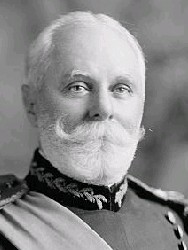
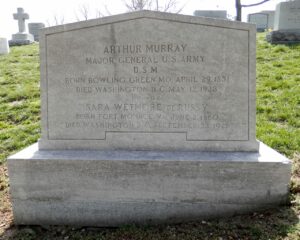 the Chief of Coast Artillery, at her debut. In October 1913, while stationed in California, the couple became engaged and married on 07-02-1914. They remained wedded until her death in October 1963.
the Chief of Coast Artillery, at her debut. In October 1913, while stationed in California, the couple became engaged and married on 07-02-1914. They remained wedded until her death in October 1963.
Pratt is the third generation of his family to serve in the United States Armed Forces. His father, Captain Henry Clitz Pratt, was a member of the 13th Infantry. In 1862, his father became a lieutenant in the New York Volunteers during the American Civil War. His grandfather was Colonel Henry Clay Pratt (1814–1884), West Point Class of 1837, who had been cited for gallantry during the Mexican–American War. Colonel Pratt served 42 years in the Army.
Pratt spent most of his career as an officer and pilot in the Army antecedents of the United States Air Force. In 1930, he was appointed Assistant Chief of the United States Army Air Corps. In 1935, he became a wing commander at the General Headquarters Air Force,  and also served as Chief of Air Corps. On 01-08-1900, Pratt enrolled at the United States Military Academy,
and also served as Chief of Air Corps. On 01-08-1900, Pratt enrolled at the United States Military Academy,  entering the Corps of Cadets. He graduated on 15-06-1904, 57th in a class of 124. On 11-07-1904, he was appointed a second lieutenant in Troop E, 4th Cavalry,
entering the Corps of Cadets. He graduated on 15-06-1904, 57th in a class of 124. On 11-07-1904, he was appointed a second lieutenant in Troop E, 4th Cavalry, 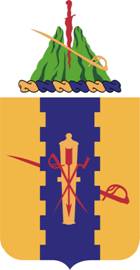 by War Department General Order No. 121. Henry entered active duty on September 15. After a month at Fort Leavenworth, he began duty at the Presidio of San Francisco. He trained for a two-year tour of duty in Malabang, which started in September 1905. At the end of his overseas service in 1907, his troop transferred to Fort Snelling, Minnesota. On 31-01-1917, Pratt left El Paso to rejoin his original regiment. He arrived at the 4th Cavalry, at Schofield Barracks, Hawaii, in March. When United States entered World War I in April, he received temporary promotion to Major. In August, he secured another commission as temporary major, this one in the Signal Corps,
by War Department General Order No. 121. Henry entered active duty on September 15. After a month at Fort Leavenworth, he began duty at the Presidio of San Francisco. He trained for a two-year tour of duty in Malabang, which started in September 1905. At the end of his overseas service in 1907, his troop transferred to Fort Snelling, Minnesota. On 31-01-1917, Pratt left El Paso to rejoin his original regiment. He arrived at the 4th Cavalry, at Schofield Barracks, Hawaii, in March. When United States entered World War I in April, he received temporary promotion to Major. In August, he secured another commission as temporary major, this one in the Signal Corps,  and assignment to the Aviation Section.
and assignment to the Aviation Section.  Henry left Hawaii in the first week of October 1917.
Henry left Hawaii in the first week of October 1917.
Pratt transferred into the Aviation Section during wartime expansion, and assigned training duties. He reported to Kelly Field on October 14, and a month later became the post adjutant at Call Field, a newly opened training field at Wichita Falls, Texas. His three months at Call Field prepared him to be the first base commander of Brooks Field near San Antonio. 
Pratt was promoted to temporary Lieutenant Colonel within a few days of taking command in February 1918. During this time he was an administrator, not a flier. In Europe, the Air Service of the Army Expeditionary Force (AEF)  organized and began combat operations, and Pratt was promoted to Colonel (temporary, Signal Corps) at the end of August. He completed pilot training, receiving a rating of Junior Military Aviator on 12-09-1918. This would qualify him for aviation command.
organized and began combat operations, and Pratt was promoted to Colonel (temporary, Signal Corps) at the end of August. He completed pilot training, receiving a rating of Junior Military Aviator on 12-09-1918. This would qualify him for aviation command.
Within ten days, Pratt was on duty at the Division of Military Aeronautics (DMA) in Washington, D.C. He was sent to Europe at the end of the first week of October, when the Meuse Argonne Offensive was underway. He participated in staff operations of the American Expeditionary Force. 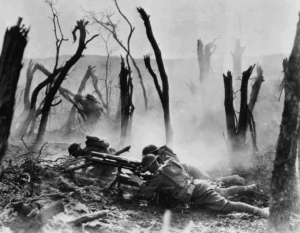 of World War I. The Meuse–Argonne offensive (also known as the Meuse River–Argonne Forest offensive, the Battles of the Meuse–Argonne, and the Meuse–Argonne campaign) was a major part of the final Allied offensive of World War I that stretched along the entire Western Front. It was fought from 26-09-1918, until the Armistice of 11-11-1918, a total of 47 days. The Meuse–Argonne offensive was the largest in United States military history, involving 1.2 million American soldiers, sailors and marines, along with 800,000 French and 850 Siamese personnel. It is also the deadliest campaign in the history of the United States Army, resulting in over 350,000 casualties, including 28,000 German lives, 26,277 American lives and an unknown number of French lives. American losses were worsened by the inexperience of many of the troops, the tactics used during the early phases of the operation, and the widespread onset of the global influenza outbreak called the “Spanish flu.”
of World War I. The Meuse–Argonne offensive (also known as the Meuse River–Argonne Forest offensive, the Battles of the Meuse–Argonne, and the Meuse–Argonne campaign) was a major part of the final Allied offensive of World War I that stretched along the entire Western Front. It was fought from 26-09-1918, until the Armistice of 11-11-1918, a total of 47 days. The Meuse–Argonne offensive was the largest in United States military history, involving 1.2 million American soldiers, sailors and marines, along with 800,000 French and 850 Siamese personnel. It is also the deadliest campaign in the history of the United States Army, resulting in over 350,000 casualties, including 28,000 German lives, 26,277 American lives and an unknown number of French lives. American losses were worsened by the inexperience of many of the troops, the tactics used during the early phases of the operation, and the widespread onset of the global influenza outbreak called the “Spanish flu.”
On 30-06-1924, Pratt was assigned to the Operations and Plans Group in the Office of the Director of Air Service. He would serve there for four years. On 01-07-1926, the Air Service was renamed the Air Corps by act of Congress, but little changed in the service. Pratt’s position continued, now under the Chief of Air Corps.
Pratt received his permanent promotion to Colonel on 01-08-1936. On16-01-1937, the Senate approved a promotion list to permanent Brigadier General that included Pratt and, among others, George Catlett Marshall, 
 with date of rank from January 1. Pratt became commandant of the Air Corps Tactical School (ACTS)
with date of rank from January 1. Pratt became commandant of the Air Corps Tactical School (ACTS)  and ex officio president of the Air Corps Board at Maxwell Field, Alabama, on March 14, his last assignment as a member of the Air Corps.
and ex officio president of the Air Corps Board at Maxwell Field, Alabama, on March 14, his last assignment as a member of the Air Corps.
Pratt was the first member of the Air Corps to achieve the permanent grade of Brigadier General. He completed his assignment as commandant of ACTS on 06-08-1938. There were no vacancies in the Air Corps for a General officer, so he returned to Washington.
In 1938, Pratt served as commandant of the Air Corps Tactical School. During the pre-war years of 1935–1940, Pratt commanded both an air force wing and an army division. After becoming a general officer, Pratt was assigned non-aviation commands including ground forces commands. During World War II Pratt did not serve as a general in the Army Air Forces but as commander of service and defense commands in the Western Hemisphere.
24-10-1938, Pratt arrived in Manila to take command of the 23rd Infantry Brigade 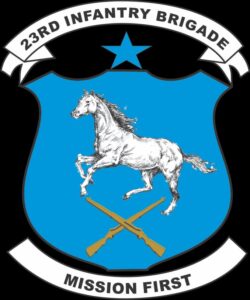 at Fort William McKinley. The 23rd Brigade was the Philippine Scouts component of the division, consisting of the 45th and 57th Infantry Regiments. It served tactical responsibility for the defense of the Lingayen area on Luzon.
at Fort William McKinley. The 23rd Brigade was the Philippine Scouts component of the division, consisting of the 45th and 57th Infantry Regiments. It served tactical responsibility for the defense of the Lingayen area on Luzon.
Pratt served as interim commander of the Philippine Division twice: from 25-07-1939, to November 1939, when Major General Walter Schuyler Grant 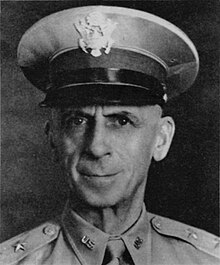
 was advanced to command of the Philippine Department; and from 31-05-1940, to the end of his own tour on 06-11-1940, replacing Major General George Grunert.
was advanced to command of the Philippine Department; and from 31-05-1940, to the end of his own tour on 06-11-1940, replacing Major General George Grunert. 
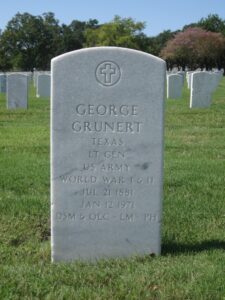 These two terms makes Pratt the only person to command both a U.S. Air Force wing and an army division.
These two terms makes Pratt the only person to command both a U.S. Air Force wing and an army division.
Prior to his return to the United States, Pratt was promoted to temporary Major General. This permanent rank was granted on 01-03-1941. His next assignment was field command of the II Corps,  from 26-12-1940, to the following August 21. He was headquartered in the Pennsylvania Railroad Building in Wilmington, Delaware. During his time as commander, both the 28th and 29th Infantry Divisions were inducted into Federal Service as part of II Corps, on February 17 and 03-02-1941, respectively. August 1941, Pratt moved to Baltimore to command the Third Corps Area,
from 26-12-1940, to the following August 21. He was headquartered in the Pennsylvania Railroad Building in Wilmington, Delaware. During his time as commander, both the 28th and 29th Infantry Divisions were inducted into Federal Service as part of II Corps, on February 17 and 03-02-1941, respectively. August 1941, Pratt moved to Baltimore to command the Third Corps Area, 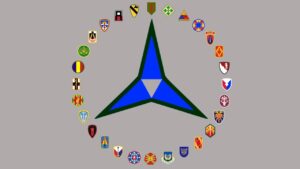 which had become a service command headquarters in 1940. He was serving there when the United States entered World War II on 07-12-1941.
which had become a service command headquarters in 1940. He was serving there when the United States entered World War II on 07-12-1941.
In January 1942, Pratt took command of the Trinidad Base Command at Fort Read. He had been chosen upon the recommendation of Lieutenant. General Frank Maxwell Andrews,

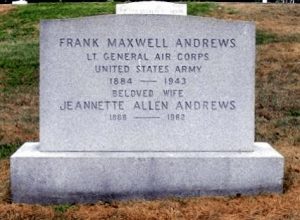 former commander of GHQ Air Force who was then commanding the Caribbean Defense Command. In November 1943, he returned to the United States for duty with the Third Service Command. In January 1944 he commanded the Southern Defense Command. His last command was of the Western Defense Command in October 1944, where he was serving as commanding general. He issued the revocation order of 17-12-1944, rescinding the order for Japanese American internment. At the end of the war he was assigned to the Office of the Chief of Staff.
former commander of GHQ Air Force who was then commanding the Caribbean Defense Command. In November 1943, he returned to the United States for duty with the Third Service Command. In January 1944 he commanded the Southern Defense Command. His last command was of the Western Defense Command in October 1944, where he was serving as commanding general. He issued the revocation order of 17-12-1944, rescinding the order for Japanese American internment. At the end of the war he was assigned to the Office of the Chief of Staff.
Pratt retired on 01-09-1946, after serving 42 years. He ended his career with ratings of Senior Pilot, Combat Observer, and Technical Observer. He received a Bronze Oak Leaf Cluster,  in lieu of a second Army Distinguished Service Medal.
in lieu of a second Army Distinguished Service Medal. ![]() Pratt had been recognized as a Knight of the Order of the Crown of Italy,
Pratt had been recognized as a Knight of the Order of the Crown of Italy, 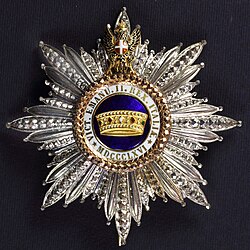 Grand Officer of the Order of the Liberator (Venezuela)
Grand Officer of the Order of the Liberator (Venezuela) 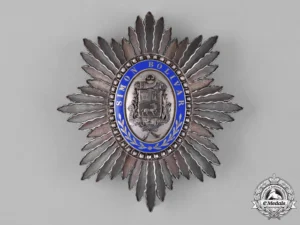 and the Order of the Southern Cross (Brazil),
and the Order of the Southern Cross (Brazil), 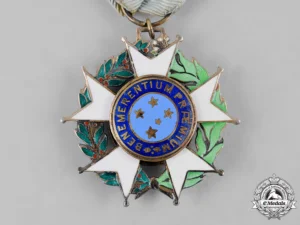 Commander of the Juan Pablo Duarte Order of Merit (Dominican Republic),
Commander of the Juan Pablo Duarte Order of Merit (Dominican Republic),  and Knight Commander of the Order of the British Empire (KBE).
and Knight Commander of the Order of the British Empire (KBE).  He was carried on the retired list of the United States Air Force in the rank of Major
He was carried on the retired list of the United States Air Force in the rank of Major
Ggeneral.
Death and burial ground of Pratt, Henry Conger.

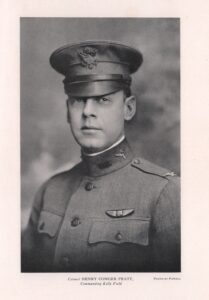
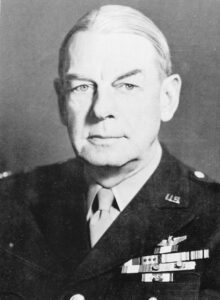
 Pratt (at right),
Pratt (at right),  with Generals Benjamin D. Foulois, Assistant Chief of Air Corps, and James E. Fechet, Chief of Air Corps, in 1931.
with Generals Benjamin D. Foulois, Assistant Chief of Air Corps, and James E. Fechet, Chief of Air Corps, in 1931.
Pratt, Henry Conger died on 06-04-1966 (aged 83) in Washington, D.C., United States and is buried, with his wife Sadie Murray Pratt who died in 1963, at Arlington National Cemetery. Section: 3, Site: 1845-B.
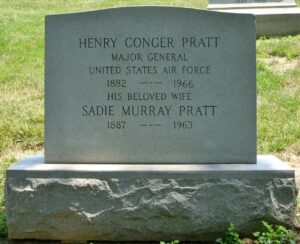
Message(s), tips or interesting graves for the webmaster: robhopmans@outlook.com















Leave a Reply